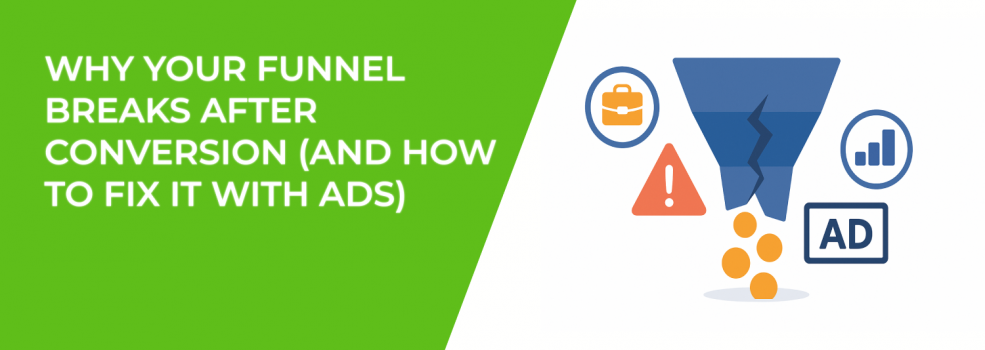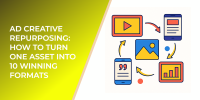You’ve worked hard to build your funnel. The landing page looks great, the offer is sharp, and people are converting.
But after that first win, things often slow down. Customers stop engaging, repeat sales don’t happen, and the funnel starts to feel broken.
This is more common than most marketers realize. Businesses focus on getting the first “yes,” yet forget what comes after. And that’s where long-term growth actually begins.
Why Funnels Break After Conversion
Funnels are usually built to push people toward one big action — buy now, sign up, or download something.
Once that moment happens, though, many funnels go quiet. Customers don’t feel guided forward, and the energy they had quickly fades.
Here are the most common reasons funnels break after conversion:
-
Silence: Customers don’t hear from you right away, and excitement disappears fast.
-
Generic messages: Follow-ups feel like copy-and-paste, instead of personal and relevant.
-
No reminders: People are busy, and if you’re not showing up again, they forget you.
-
No clear path: Without direction, customers aren’t sure what to do next.
When these issues pile up, customers move on quickly. Instead of growing the relationship, you lose the chance to deepen it. If you’re struggling with this problem, it may be worth reviewing your funnel structure from audience to conversion to spot the gaps.
How Ads Keep the Funnel Alive
The good news is that ads can bridge this gap. They act like a steady presence, reminding customers of your value and helping them move naturally toward the next step.
When you use ads after conversion, you’re not just selling. You’re teaching, supporting, and building trust, which is what keeps people engaged.
1. Retargeting
Retargeting is one of the most powerful tools you have after conversion. It lets you show ads to people who just took action and are already familiar with your brand.
You can use these ads to:
-
Share a short video that explains how to get started.
-
Highlight testimonials from customers who continued with your product or service.
-
Point them to a “next step” page that gives clear guidance on what to do.
These simple reminders make sure the relationship doesn’t fade. If you’re new to this tactic, here’s a guide on how to set up Facebook retargeting that walks you through the process.
2. Upsell and Cross-Sell
A single purchase is rarely the end of the story. Customers who buy once are more likely to buy again, and ads can help make that happen.
Show them upgrades, complementary products, or bundles that fit what they’ve already chosen. Done well, this doesn’t feel pushy — it feels helpful.
For example:
-
Coffee maker buyers might see ads for premium beans or reusable filters.
-
Fitness program customers might get ads for meal plans or coaching sessions.
-
Software subscribers could see ads for advanced features or add-ons.
When you position these offers as logical next steps, customers feel supported rather than pressured.
3. Building Trust
Not every ad should sell something new. Some should focus on adding value and strengthening the relationship.
Educational tips, quick tutorials, or even customer success stories are perfect for this. They remind people why they chose you and reinforce the trust that led them to convert in the first place.
Some effective options include:
-
Sharing quick “how to” guides.
-
Posting short customer success videos.
-
Offering helpful industry insights.
By weaving in value-focused ads, you make sure customers keep engaging because they feel you’re invested in their success.
4. Encouraging Repeat Actions
Many conversions aren’t direct sales. Sometimes it’s a free trial, a webinar registration, or a simple sign-up.
Without follow-up, most people never take the next step. Ads can change that by nudging them back at just the right time.
For example:
-
A reminder to log in during the trial period.
-
A countdown for an upcoming webinar.
-
A follow-up for people who downloaded a free guide but haven’t opened it.
These nudges don’t just bring people back — they push them closer to becoming long-term customers. If you’re noticing drop-offs here, it may also help to troubleshoot why your ads aren’t converting in the first place.
Tips for Strong Post-Conversion Ads
If you want your funnel to keep flowing smoothly, you need a plan for the stage after conversion. That means being intentional about the messages customers see once they’ve taken their first step.
Here are a few practical tips:
-
Plan the journey: Map out the first few weeks after someone converts. Decide what they should do first, second, and third, then build ads to match that flow.
-
Use custom audiences: Connect your CRM or email list to your ad platform so you can target people based on where they are in the funnel. If you need a refresher on this, here’s a step-by-step guide to defining your target audience.
-
Keep content fresh: Mix educational content, reminders, and offers. A variety of messages keeps customers engaged without overwhelming them.
-
Experiment with formats: Some people respond better to videos, while others prefer carousels or even simple image ads. Test what works best.
-
Stay consistent: Don’t run ads for a short burst and then disappear. Show up regularly so people don’t forget about you.
These steps give your funnel a steady rhythm, making sure customers feel guided instead of abandoned.
Conversion Is Just the Beginning
Too many funnels stop right after the first win. But conversion isn’t the end of the customer journey — it’s the starting point for building loyalty and long-term growth.
When you stay visible after conversion, you make sure customers don’t lose interest. Ads give you a way to keep the conversation alive, build trust, and guide people toward deeper engagement.
If your funnel feels broken, look closely at what happens after the first conversion. The fix is usually simple: keep showing up, keep adding value, and keep your brand in front of the people who already said yes.
So here’s the big question: once customers convert, do they feel guided and supported, or do they hear nothing at all?

